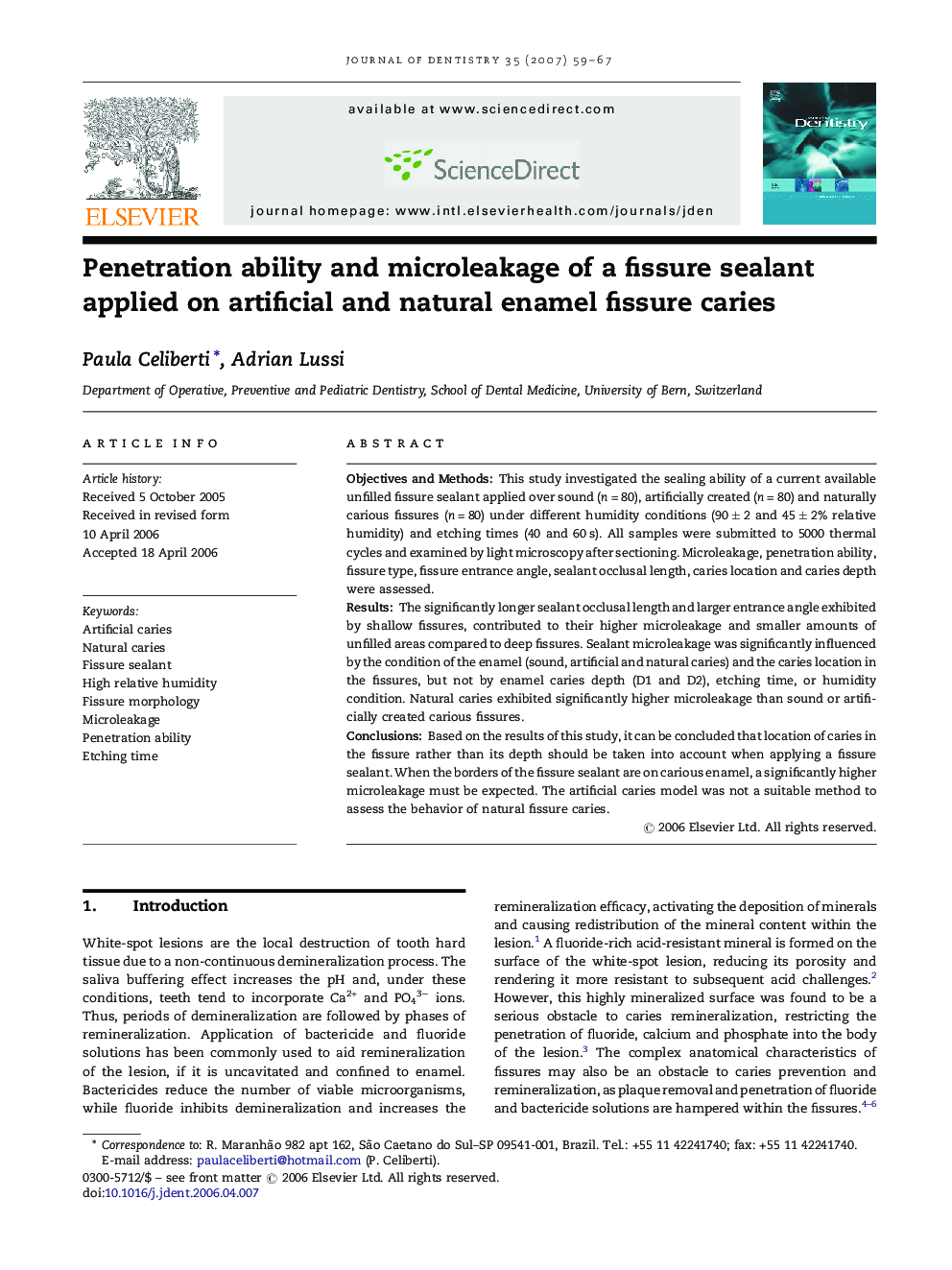| کد مقاله | کد نشریه | سال انتشار | مقاله انگلیسی | نسخه تمام متن |
|---|---|---|---|---|
| 3146462 | 1197275 | 2007 | 9 صفحه PDF | دانلود رایگان |

Objectives and MethodsThis study investigated the sealing ability of a current available unfilled fissure sealant applied over sound (n = 80), artificially created (n = 80) and naturally carious fissures (n = 80) under different humidity conditions (90 ± 2 and 45 ± 2% relative humidity) and etching times (40 and 60 s). All samples were submitted to 5000 thermal cycles and examined by light microscopy after sectioning. Microleakage, penetration ability, fissure type, fissure entrance angle, sealant occlusal length, caries location and caries depth were assessed.ResultsThe significantly longer sealant occlusal length and larger entrance angle exhibited by shallow fissures, contributed to their higher microleakage and smaller amounts of unfilled areas compared to deep fissures. Sealant microleakage was significantly influenced by the condition of the enamel (sound, artificial and natural caries) and the caries location in the fissures, but not by enamel caries depth (D1 and D2), etching time, or humidity condition. Natural caries exhibited significantly higher microleakage than sound or artificially created carious fissures.ConclusionsBased on the results of this study, it can be concluded that location of caries in the fissure rather than its depth should be taken into account when applying a fissure sealant. When the borders of the fissure sealant are on carious enamel, a significantly higher microleakage must be expected. The artificial caries model was not a suitable method to assess the behavior of natural fissure caries.
Journal: Journal of Dentistry - Volume 35, Issue 1, January 2007, Pages 59–67